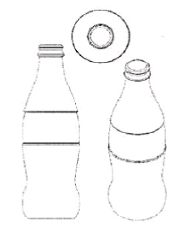Coca-Cola, commonly known as Coke is the soft-drink most of us have loved as children and continue to like as adults still. The drink has been in circulation since last one century making it one of the globally reputed brands. Coca-Cola has several word and device related trademark registration. However, it wanted to increase the ambit of its rights and applied for shape registration of metallic, glass and plastic bottles before the Office for Harmonization of Internal Market (OHIM).
The OHIM rejected this application on the grounds that the shape 'contour bottle with fluting' was not distinctive enough in relation to the goods for which the application had been submitted. This order was appealed before the General Court. The General Court upheld the OHIM's decision and ruled that the shape of the bottle was simply a variant of the bottles available in the market; no evidence had been submitted to show that the shape had gained any secondary meaning among the consumers therefore, the application was rejected.

This decision of the General Court is in consonance with the guidance that the CJEU had given in Nestlé's quest for trademark registration for the shape of Kit-Kat chocolates. In that guidance the CJEU had emphasized on the shape mark being distinctive enough to indicate only one source i.e. Nestlé. Similarly, in Coca-Cola's case the bottle shape was common therefore not qualified for trademark registration. It is interesting to note that despite the popularity a brand enjoys, it might be difficult to obtain shape mark registration unless the shape stands out in itself i.e. even if the brand name is absent on the product, the consumer would only recall one proprietor e.g. a series of mountains as the shape of chocolates immediately reminds of Toblerone chocolates. It is time that proprietors of marks, shape up to gain an extra layer of protection in the form of shape mark.
The content of this article is intended to provide a general guide to the subject matter. Specialist advice should be sought about your specific circumstances.

